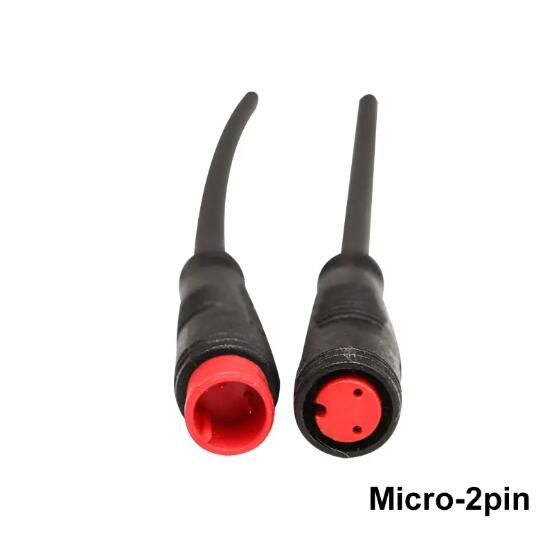Connecting the Dots: The Versatile 2-Pin Signal Connector
2023-10-18
Introduction
In the intricate world of electronics and electrical engineering, connectors are the unsung heroes that enable seamless communication between devices and components. The 2-pin signal connector is one such unassuming yet essential component that plays a pivotal role in facilitating the transfer of signals and power in various applications. In this blog, we will explore the features, applications, and significance of the 2-pin signal connector in modern technology.
Understanding the 2-Pin Signal Connector
The 2-pin signal connector, as the name suggests, is a small, two-contact connector used to establish electrical connections between two devices or components. These connectors are designed to carry low voltage signals, making them ideal for applications where precision and reliability are paramount.
Key Features of 2-Pin Signal Connectors
1. Compact Design: 2-pin signal connectors are typically small and lightweight, making them suitable for space-constrained applications.
2. Durability: They are constructed from robust materials, such as plastic or metal, to withstand mechanical stress, environmental factors, and frequent connections and disconnections.
3. Polarity: These connectors often have a designated polarity to ensure proper alignment and connection, preventing reversed connections that could damage equipment.
4. Secure Locking Mechanism: Some 2-pin signal connectors feature a secure locking mechanism to prevent accidental disconnection, providing additional reliability in critical applications.
5. Variety of Types: These connectors come in various types, such as wire-to-wire, wire-to-board, or board-to-board connectors, catering to diverse connectivity requirements.
Applications of 2-Pin Signal Connectors
The versatility of 2-pin signal connectors makes them suitable for a wide range of applications across different industries:
1. Consumer Electronics: These connectors are commonly found in devices like smartphones, tablets, laptops, and cameras, where they establish connections between components like batteries, displays, and sensors.
2. Automotive Industry: In vehicles, 2-pin signal connectors are used for various purposes, including connecting sensors, lights, and control modules.
3. Industrial Automation: They play a crucial role in industrial automation systems, connecting sensors, actuators, and control panels.
4. Medical Devices: In medical equipment, these connectors are used to link sensors, diagnostic devices, and patient monitoring systems.
5. Aerospace and Aviation: In the aerospace industry, these connectors are used in avionics systems, providing reliable connections for critical instruments.
6. Renewable Energy: Solar panels and wind turbines use 2-pin signal connectors to connect photovoltaic cells, sensors, and monitoring equipment.
7. Networking and Telecommunications: They are employed in network equipment, routers, and switches to establish connections between various components.
Significance in Modern Technology
The 2-pin signal connector's significance in modern technology lies in its ability to provide reliable and secure connections in a compact form factor. As technology evolves, devices become smaller and more interconnected, increasing the demand for connectors that can deliver precision and dependability. In applications where data transmission, power distribution, and signal integrity are critical, these connectors ensure seamless communication and efficient operation.
Conclusion
The unassuming 2-pin signal connector may be small in size, but its role in modern technology is monumental. Its versatility, durability, and reliability make it an indispensable component in various industries and applications. As technology continues to advance, these connectors will continue to play a crucial role in enabling the seamless flow of signals and power, connecting the dots in our increasingly interconnected world.



